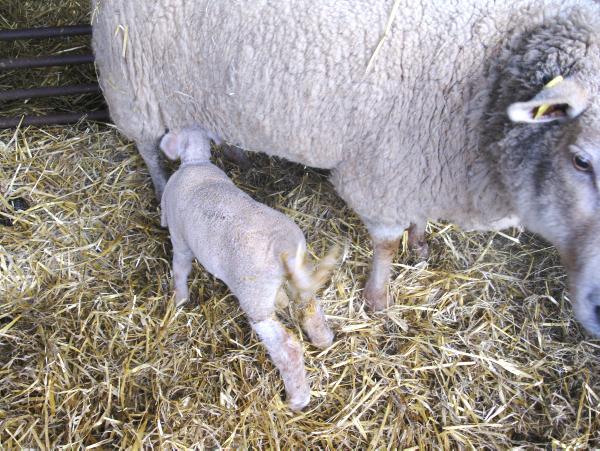
LOYALTY CODE:
The paper code cannot be redeemed when browsing in private/incognito mode. Please go to a normal browser window and enter the code there

LOYALTY CODE:
The paper code cannot be redeemed when browsing in private/incognito mode. Please go to a normal browser window and enter the code there
This content is copyright protected!
However, if you would like to share the information in this article, you may use the headline, summary and link below:
Title: Farmer writes: Skinning a lamb to get a ewe to foster a triplet
This week we had our first lamb loss from a ewe scanned as carrying a single lamb (other deaths were from multiple births).
https://www.farmersjournal.ie/farmer-writes-skinning-a-lamb-to-get-a-ewe-to-foster-a-triplet-154983

ENTER YOUR LOYALTY CODE:
The reader loyalty code gives you full access to the site from when you enter it until the following Wednesday at 9pm. Find your unique code on the back page of Irish Country Living every week.

CODE ACCEPTED

You have full access to farmersjournal.ie on this browser until 9pm next Wednesday. Thank you for buying the paper and using the code.

CODE NOT VALID
Please try again or contact us.
For assistance, call 01 4199525
or email subs@farmersjournal.ie
Sign in

Incorrect details
Please try again or reset password
If would like to speak to a member of
our team, please call us on 01-4199525
Reset
password
Please enter your email address and we
will send you a link to reset your password

If would like to speak to a member of
our team, please call us on 01-4199525
Link sent to
your email
address
![]()
We have sent an email to your address.
Please click on the link in this email to reset
your password. If you can't find it in your inbox,
please check your spam folder. If you can't
find the email, please call us on 01-4199525.
![]()
Email address
not recognised
There is no subscription associated with this email
address. To read our subscriber-only content.
please subscribe or use the reader loyalty code.
If would like to speak to a member of
our team, please call us on 01-4199525
 This is a subscriber-only article
This is a subscriber-only article
Update Success !

I don’t know why the lamb died. I just found the ewe fussing over a fully formed lifeless lamb that didn’t show signs of a difficult lambing.
I immediately took out my penknife, removed the skin from the dead lamb, and placed it on a triplet taken from another ewe. Right from the off the mother of the dead lamb took to the fostered triplet in her own lamb’s skin as it was her own.
I timed myself skinning the lamb as it’s not a nice job. Starting with cutting a ring in the skin around the neck, plus rings around each front leg, opening the skin off the chest and then peeling body skin right back to the tail, the job took five minutes.
There’s a lot of work when lambing indoors but hopefully each lamb reared from February will come into in excess of €100.
Tagging sheep can be a pain but now that they are tagged, I keep a record of each lambing by tag number, date, number of lambs, and spray number on mother and lamb(s). It’s interesting to see the same ewes repeatably having triplets over the years while others tending to have repeat single lambs. One way to increase your lamb crop would be to sell off all two-year-old ewes that only give you single lambs.
There are a few tricks to remove some of the slog from lambing. In the few minutes after birth the lamb’s suckling reflex is already strong. If you put the ewe on her backside and bring the lamb(s) to the teat it will get that vital first taste of beestings.
Sometimes if the ewe is slow to lick her lamb(s) throwing a little coarse ration on the lamb encourages the ewe to lick and dry off her offspring.
Often if I think that a ewe is in pain after a hard lambing, I give her a few Disprins dissolved in water. It’s not expensive and seems to relax the ewe.
Sometimes there are jobs that you can skip. I remember reading where a survey of UK flocks found that the incidence of Joint Ill or Navel Ill was actually higher in flocks that were treating lambs navels at birth, than it was in the flocks doing no navel treatment.
I only navel dip lambs that I think have been exposed to dirty bedding. Lambs that are born on a dry straw bed are not treated.
Really Joint Ill can be a mystery disease. Over the years I have seen the best managed flocks (including Teagasc flocks) being overwhelmed with Joint Ill. In such cases the shepherds were forced into giving a preventative injection of antibiotic to every lamb at birth.
Every time I handle young lambs I like to check the navels for any sign of swelling. If you treat the condition early the chance of success is higher.
SHARING OPTIONS: